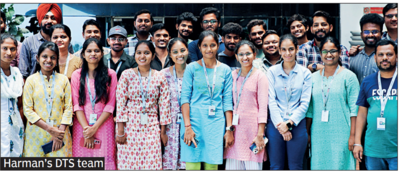Breaking Boundaries: Harman’s Indian Engineers Harness Quantum Power to Solve a Timeless Puzzle

Harman, renowned for its audio brands like JBL, is making waves in the digital realm with its Digital Transformation Solutions (DTS) business. With a staggering 6,000 employees based in India out of the global DTS team of 7,000, these talented individuals are at the forefront of Harman’s groundbreaking digital innovations across diverse industries such as healthcare, telecommunications, hospitality, and manufacturing.

One particularly captivating area that has captured the attention of Harman’s Indian engineers is quantum computing. Nick Parrotta, President of DTS and Chief Digital and Information Officer at Harman, firmly believes in the phenomenal potential of quantum technology. He anticipates a pivotal year for quantum computing, with IBM preparing to launch 1,000 qubit machines, surpassing the current 500 qubit systems. Parrotta predicts that within a couple of years, the quantum computing power will easily reach 10,000 qubits. Furthermore, he envisions a radically transformed future within the next five years, where quantum breakthroughs will render the RSA encryption, one of the oldest and widely used cryptographic systems, vulnerable. Recognizing the moonshot nature of this endeavor, Parrotta emphasizes the importance of investing in this emerging field.
The team at Harman is devoting substantial effort to quantum optimization within the realm of quantum computing. Mathematical optimization involves finding the best solution to a problem, based on defined criteria, from a set of potential solutions. Parrotta asserts that quantum computers will play a pivotal role in solving intricate mathematical optimization challenges, including the renowned 100-year-old problem known as the traveling salesman problem. Originating in 1930, this problem revolves around determining the shortest possible route for a salesman to visit a set of cities exactly once before returning to the starting point. As the number of cities increases, finding the optimal solution becomes exponentially difficult and time-consuming. The traveling salesman problem falls into the category of NP-hard problems, meaning that no known algorithm can solve it efficiently for large city sets.
Parrotta underlines the significance of the traveling salesman problem in our e-commerce-driven world, drawing parallels to last-mile delivery conundrums faced by giants like Flipkart and Amazon. The challenge of optimizing delivery routes while accounting for variables such as road closures and traffic quickly becomes insurmountable for traditional computers. Consequently, Parrotta and his team in India are ambitiously striving to construct a quantum framework that can revolutionize this domain.
Harman’s pursuit of quantum computing and optimization not only showcases their commitment to cutting-edge innovation but also highlights their endeavors to address real-world challenges. As the world eagerly awaits the future of quantum technology, Harman’s India-based engineers are spearheading a valiant effort to solve a century-old problem and unlock the immense potential that lies within quantum computing.



